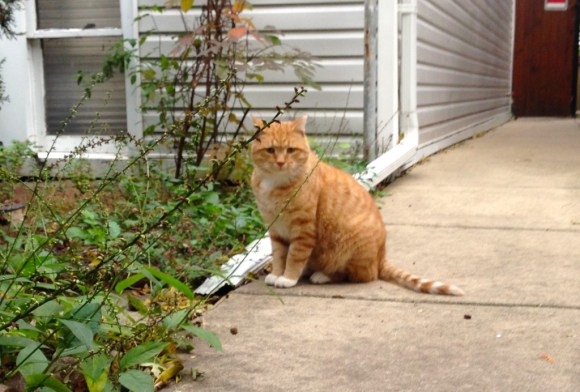Lots of Changes with the Outdoor Cats from the Jose and the Pussycats Colony
Last month there was a lot going on with the Jose and the Pussycats Colony.
Betty died. Noche Nariz disappeared.
And the feeders had bought a pair of Siamese male cats for $1000 from a breeder in Indiana. They keep them indoors, but they weren’t fixed. Luckily I managed to convince them to take them to the vet clinic for free neuter packages. Their names are Ruby 1 and Ruby 2. I called the clinic on their behalf, and showed up to escort the feeders there.
A lot of this was confusing to keep track of because the feeders don’t return my calls – I have to show up in person to talk to them and arrange everything and get updates on the cats. I had no idea they bought those cats a year ago because I never thought to ask about indoor cats, only outdoor ones. There’s also a lot of people involved here – this is a family spread out in three houses.
In the midst of all this, an orange cat had showed up at their feeding station. He was super friendly, and luckily he was already ear tipped.

Which means he was TNR’d already. I’m pretty sure I’m not the one who did that – I didn’t recognize him. The feeders wanted me to adopt him out, but there was too much going on at the time. I told them to keep feeding, and to keep an eye on him. Maybe I could even find his owner. He was certainly friendly enough.
I went by there again today and one of the family members came out and thanked me for taking the orange cat. I said I didn’t take him. She said that he hasn’t been around anymore. I had to laugh because I only wish it was so easy for me to just “take” cats off the street. So many are friendly and shelters are perpetually full. The shelter has even had multiple staff members at this site for the past few years telling me how friendly all of the cats are. I did manage to foster and adopt out Frostie from there. Fingers crossed that perhaps the orange cat just went home once winter hit, or that another neighbor took it upon themselves to help a cat out. If that’s the case, I’d love to meet them.






































